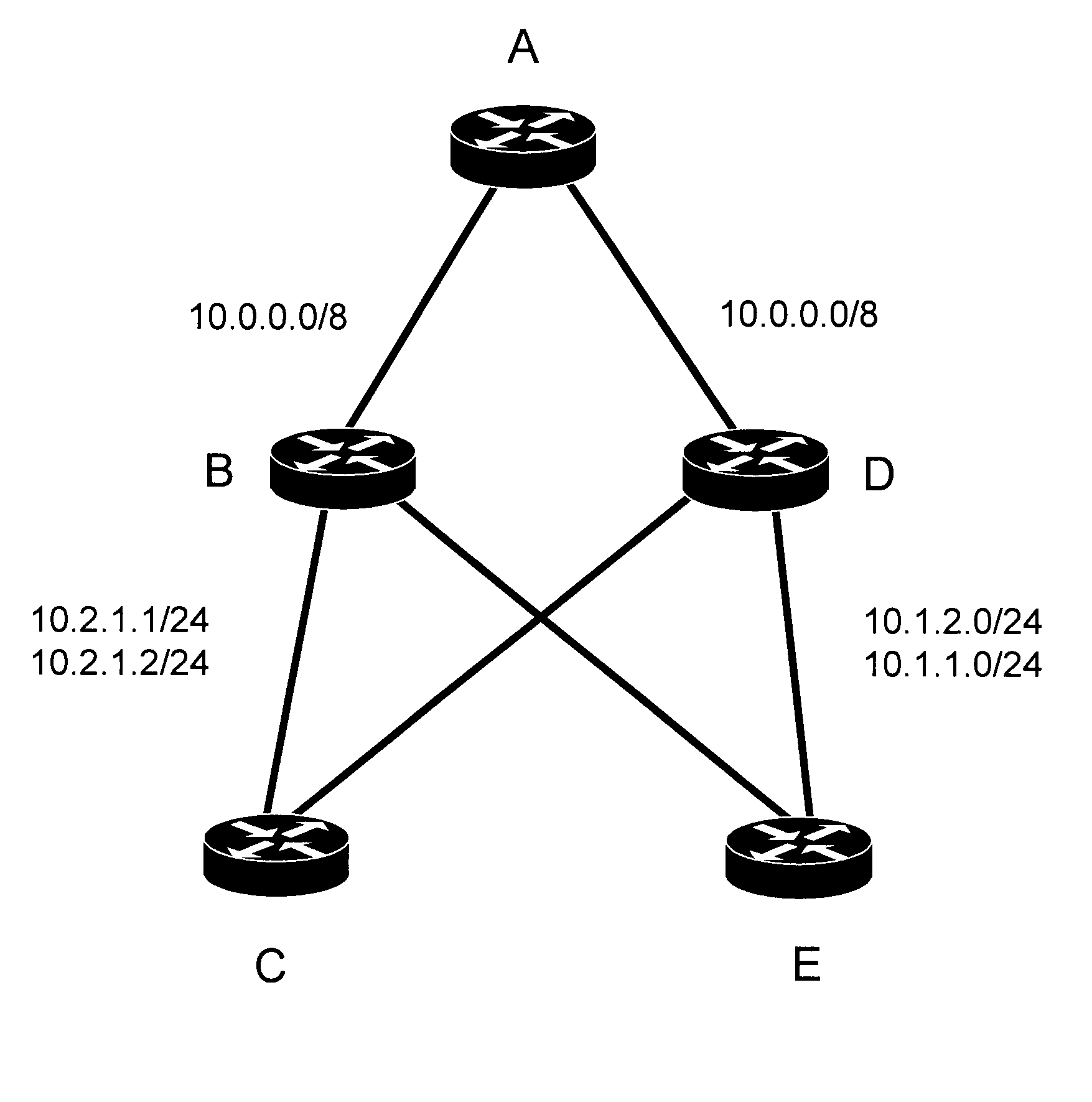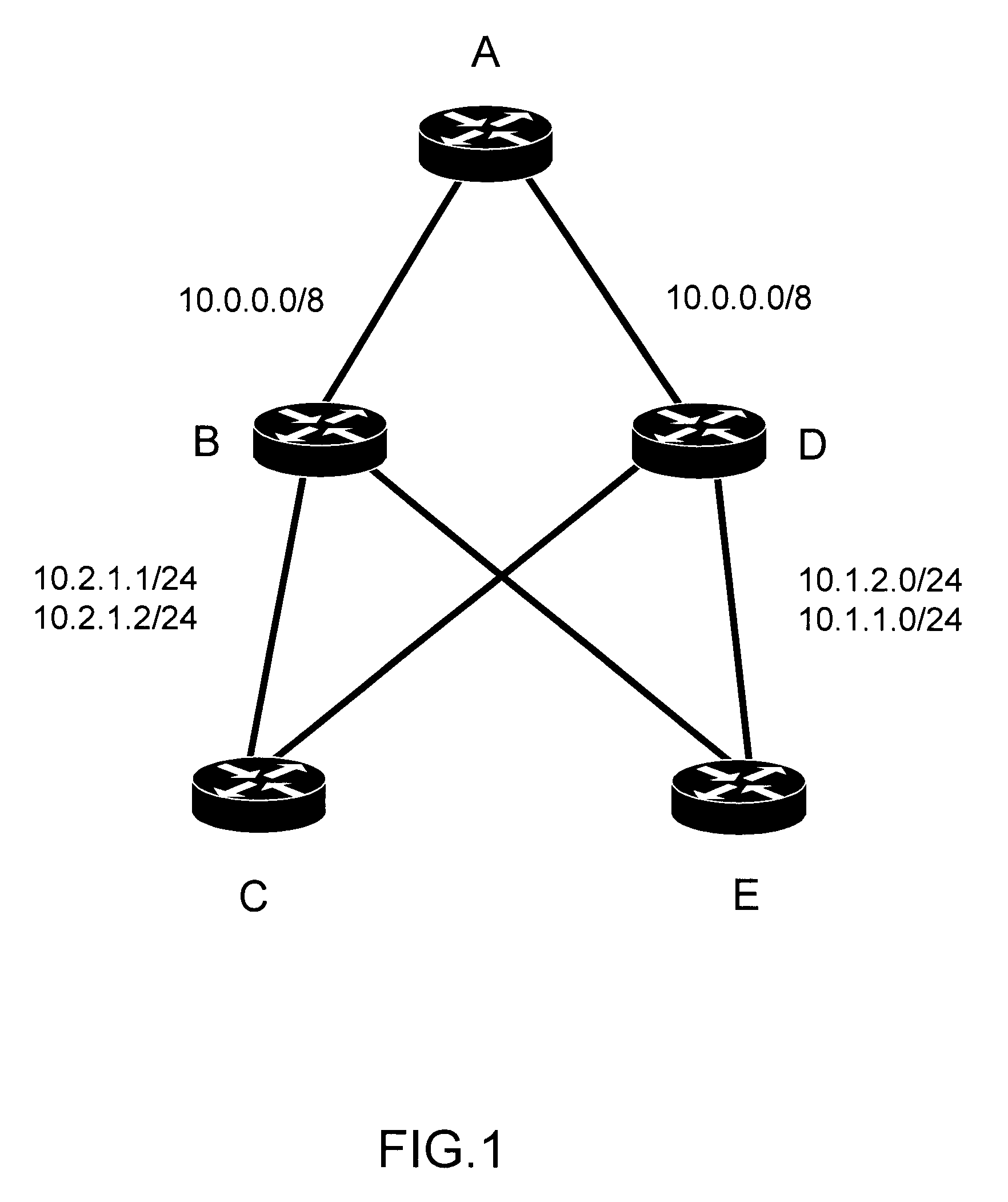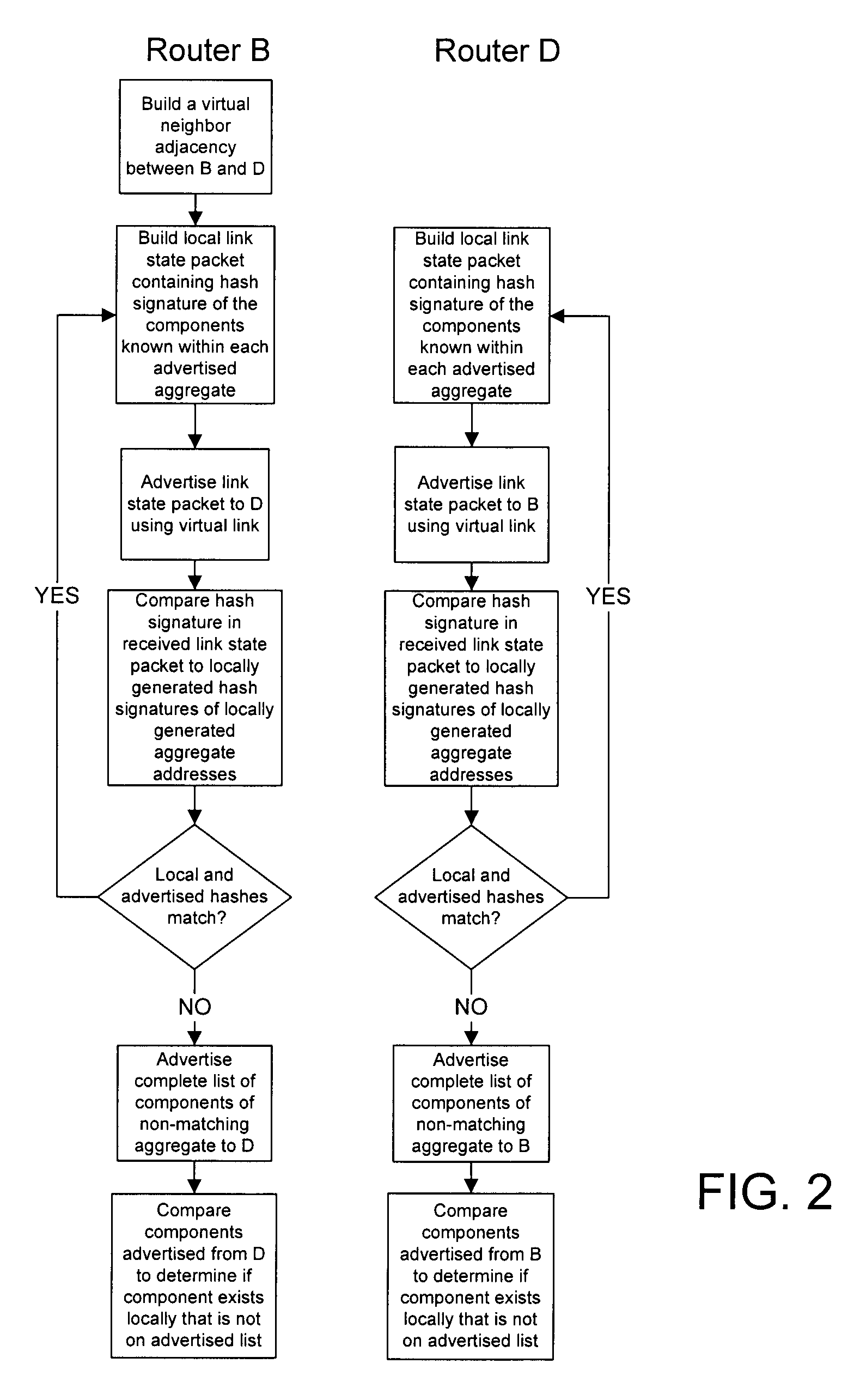Technique to automatically deaggregate an optimum set to prevent suboptimal routing or routing failures within a link state flooding domain
- Summary
- Abstract
- Description
- Claims
- Application Information
AI Technical Summary
Benefits of technology
Problems solved by technology
Method used
Image
Examples
Embodiment Construction
[0012]In a network having first and second aggregating routers, a first group of component addresses is hashed at the first aggregating router to form a first hash signature, where the first group of component addresses has been summarized at the first aggregating router as a first aggregate address. The first aggregate address and first hash signature are inserted into a link state packet and advertised to the second aggregating router over a virtual link.
[0013]A received second hash signature based on a second group of address components is compared to the first hash signature, where the second group of components has been summarized by the second aggregating router as the first aggregate address. A list of the first group of component addresses is advertised to the network if the first and second hash signatures do not match.
Description
[0014]Reference will now be made in detail to various example embodiments. These example embodiments are illustrated in the accompanying drawings....
PUM
 Login to View More
Login to View More Abstract
Description
Claims
Application Information
 Login to View More
Login to View More - R&D
- Intellectual Property
- Life Sciences
- Materials
- Tech Scout
- Unparalleled Data Quality
- Higher Quality Content
- 60% Fewer Hallucinations
Browse by: Latest US Patents, China's latest patents, Technical Efficacy Thesaurus, Application Domain, Technology Topic, Popular Technical Reports.
© 2025 PatSnap. All rights reserved.Legal|Privacy policy|Modern Slavery Act Transparency Statement|Sitemap|About US| Contact US: help@patsnap.com



